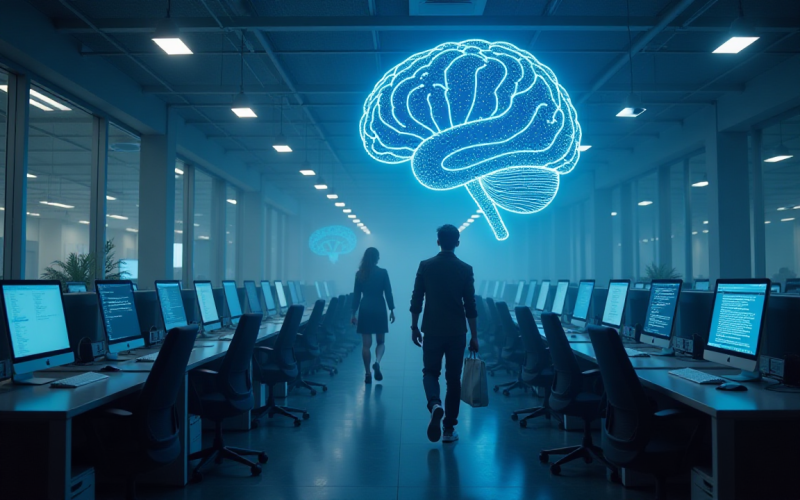The arrival of generative artificial intelligence is already leaving its mark on the American labor market, with early signs of disruption appearing in employment data, according to a senior Goldman Sachs economist.
While large-scale AI deployment across industries is still in its early stages, hiring patterns—particularly in the technology sector—are beginning to shift.
Early signs of slowdown in tech hiring
Joseph Briggs, senior global economist at Goldman’s research division, said in a podcast interview set to air Tuesday that the most notable trend so far is a pullback in tech sector hiring.
Historically, tech jobs have steadily increased as a share of total US employment for the past two decades.
However, Briggs noted that in the past three years, that growth has not only slowed but undershot its long-term trend.
The slowdown is hitting younger workers hardest. Unemployment rates among tech employees aged 20 to 30 have climbed by three percentage points since the start of 2025—significantly more than the rise seen across the broader tech sector or among other young workers.
Briggs attributes this to a cautious approach from employers as they explore AI adoption.
Automation alters hiring strategies
The launch of OpenAI’s ChatGPT in November 2022 has accelerated AI adoption and reshaped corporate strategies.
Generative AI models have rapidly become capable of performing many routine tasks, and in some cases, are already matching the skills of human software engineers.
Technology leaders are increasingly candid about AI’s contribution to their workflows.
Alphabet and Microsoft executives have disclosed that AI generates around 30% of the code in certain projects, while Salesforce CEO Marc Benioff said AI handles up to 50% of work at his company.
According to Briggs, this is influencing hiring decisions. Tech CEOs are holding back on recruiting junior staff—roles more easily automated—while prioritizing experienced workers who can adapt to AI-driven workflows.
George Lee, co-head of the Goldman Sachs Global Institute, described young employees as “a little bit the casualty” of this transition as companies seek to remain agile without sacrificing competitiveness.
Long-term risks and the potential for greater disruption
Goldman Sachs research estimates that, in a baseline scenario, 6% to 7% of US workers could eventually lose their jobs due to AI-related automation.
The displacement could be more severe if corporate adoption accelerates faster than the decade-long timeline Briggs assumes—either through rapid technological advances or an economic downturn prompting cost-cutting.
One significant unknown is the potential emergence of artificial general intelligence (AGI), which would match human-level ability to learn and adapt across domains.
Briggs cautioned that AGI could substantially increase the scope for labor substitution, creating a far more disruptive impact on employment than current models anticipate.
While AI promises to enhance productivity and shareholder returns, its evolving role in the workplace presents clear challenges for younger workers and sectors most susceptible to automation.
As companies refine their AI strategies, the balance between innovation and job security is likely to remain a central focus in the labor market debate over the coming years.
The post Generative AI begins to reshape the US labor market, Goldman Sachs economist warns appeared first on Invezz


